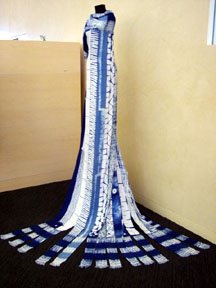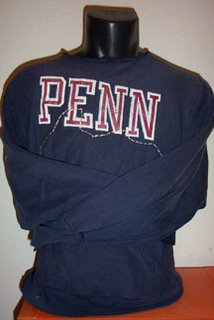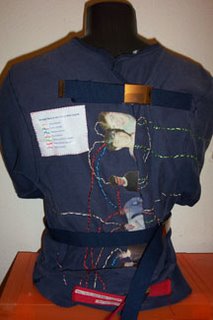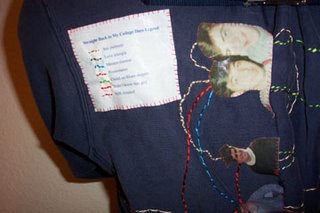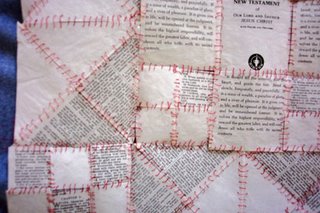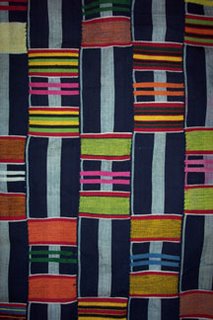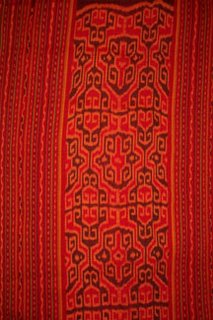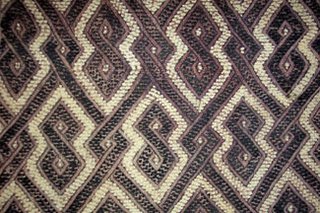Sorry to have been such a deadbeat blogger. Last weekend Doug and I went to San Francisco State University to the MFA show and then to Oakland, CA to a party given by our friends Quang Dang & Donald Williams. I met Quang 13 years ago -- he was an acquaintance of a person I shouldn't've been dating. My friendship with Quang has lasted a lot longer than that love affair. I hadn't seen Quang for over 10 years, and when we got together it was very easy -- we just fell back into the rhythm of our friendship.
Quang & Donald had the party to thank their friends for sponsoring them as they participate in the 2006 AIDS Lifecycle (Click here if you'd like to contribute to Quang & Donald's ride & also to take a peek at their training blog.) I'm very grateful that Quang & Donald are participating in this ride, not only because they're raising money for AIDS research, but these events remind the public that the worldwide phenomenon of AIDS hasn't gone away just because some people in the US don't have the same visible manifestations as the AIDS patients in the 1980s. (I vividly remember in the 1980s seeing people my age -- at the time in my 20s -- walking with canes and dying; I cannot explain the lasting impression these images have made on my psyche & the occasional survivor's guilt that I feel.)
This experience has reminded me of the AIDS quilt, a portion of which I saw in the late 1980s in Philadelphia with my friend, Melva Hightower. I remember thinking how subversive it was to use a medium associated with domesticity and comfort, a quilt, and to associate it with such a controversial issue. I later learned that quilts have a whole history of being associated with the subversive (e.g., quilts being used to guide slaves to freedom). The AIDS quilt is incredibly moving, as it humanizes AIDS. (As a side note, I haven't seen Melva for years, but she is a textile artist, and I've learned that she's heavily involved in the wonderful ArtQuilts at the Sedgwick show. Click here for more info on Melva.)
 This thought about the AIDS Quilt reminded me of an abandoned project from last year. A few years ago the Loom & Shuttle Guild in San Francisco had a nametag competition, as a way to get members to create nametags to wear. I had intended to create a card-woven nametag similar in style to those nametags with the text, "Hello. My name is..." The project turned out to be too involved for me to finish in time (there were ~200 cards), so I decided instead to do some nametags with names I had been called in my past. While I was weaving the first nametag with the words, "Hello. My name is Faggot," the cord holding the warp stick to the loom broke, and the cards went all over the place; I then abandoned the project. An image of the unfinished project is above. Note how only the word "HELL" is woven at the top, which is an appropriate word to describe the whole project.
This thought about the AIDS Quilt reminded me of an abandoned project from last year. A few years ago the Loom & Shuttle Guild in San Francisco had a nametag competition, as a way to get members to create nametags to wear. I had intended to create a card-woven nametag similar in style to those nametags with the text, "Hello. My name is..." The project turned out to be too involved for me to finish in time (there were ~200 cards), so I decided instead to do some nametags with names I had been called in my past. While I was weaving the first nametag with the words, "Hello. My name is Faggot," the cord holding the warp stick to the loom broke, and the cards went all over the place; I then abandoned the project. An image of the unfinished project is above. Note how only the word "HELL" is woven at the top, which is an appropriate word to describe the whole project.Next weekend is the Conference of Northern California Handweavers in Modesto, so I'll be blogging again in a few weeks.
B.

